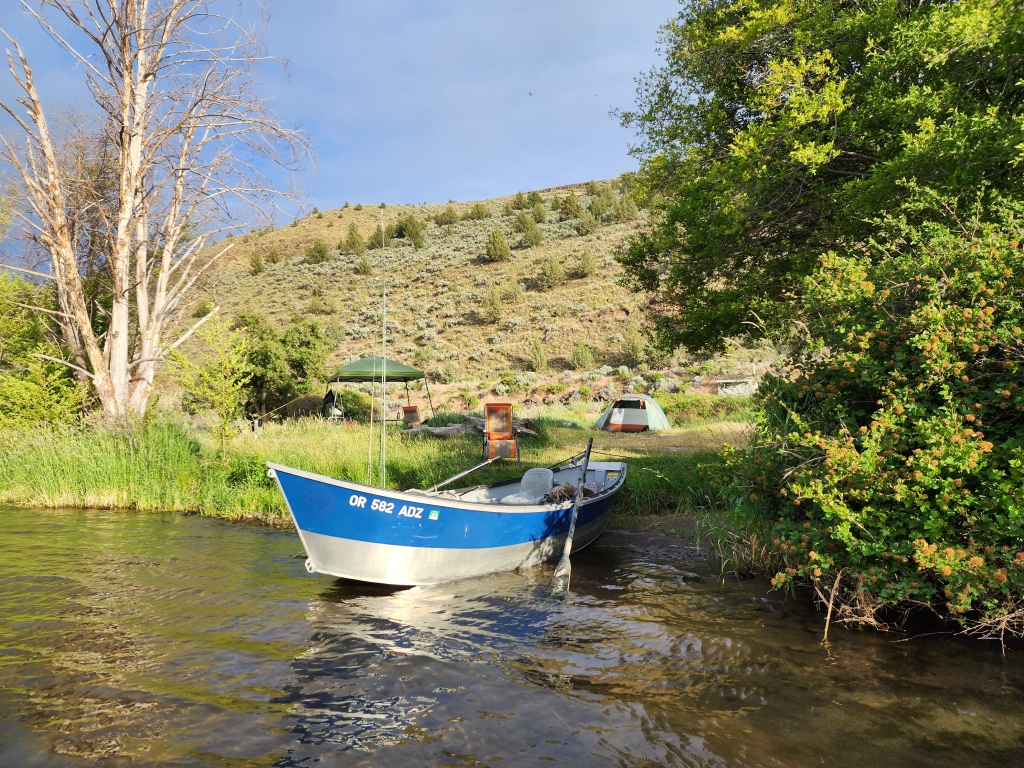
Yesterday my friend Scott and I finished up 3 days on the Lower Deschutes. This has been an annual spring trip for me for many years. I went on a couple of day trips before stonefly season but decided to wait until the crowds had dissipated before heading back. The fish are still there and, once again, the fishing was excellent. I don’t care what anyone with an axe to grind or agenda to promote says, the Lower Deschutes is in great shape. Fish, aquatic insects, birds, and bats were abundant. Caddis covered everything, including my face at times, which was irritating. Lots of snakes this year as well. Some extreme weather events have clearly occurred since I was last on the river about a month ago. Scott, a professional hydrogeologist, was impressed. Keep reading for more and some cool photos.
For me, camping in one spot on the river is the best way to fish the Deschutes. You can fish early and late, take a nap in the middle of the day when others are floating by, and mostly have both sides of the river almost to yourself for miles. The weather was great the first day and a half but then a cold front came in with really strong winds and even some rain for the second half of the trip. The wind especially put a damper on things. Regardless, we were both able to land well over 30 trout with many more played and lost.
Here’s the heretical statement: the fishing is simply better now than before PGE’s Selective Water Withdrawal tower was turned on. It used to be that a big trout was 16″ and a rare monster was 18″. Trout from 14″ to 16″ are common now, I don’t even bother to count them. Big fish are 17″ to 18″ and the monsters are 20″+. I landed and measured 5 over 17″ in what was essentially 2 full days of fishing.



The 3 photos above are of 17″, 18″, and 20″ fish. I didn’t take photos of all of them, and did not take them out of my net, but you can see the measurements. No size guessing and adding an inch or two required.
Of course, it is a beautiful place to camp.


With some curious critters.

Perhaps the most impressive part of the trip was evidence of extreme localized precipitation, especially on the reservation side of the river. The dirt road was washed out in many places with new alluvial fans composed of good sized rock extending into the river. Here’s Scott standing where the road was just a few weeks ago:

Looking up:

Looking down:

Here’s a spot where the erosion went deep rather than wide:

I hope you get down there and enjoy the river soon.
